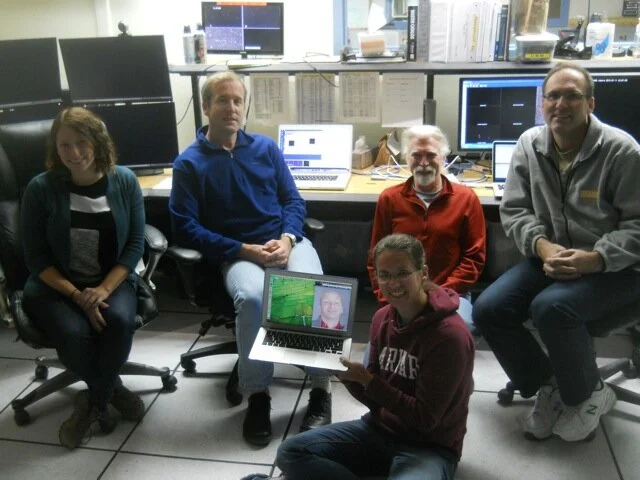DSSI
As a postdoc, I was involved with the Differential Speckle Survey Instrument (DSSI; PIs Steve Howell and Elliot Horch) team, taking observations at Gemini North (and soon South). DSSI is designed to characterize exoplanet host star multiplicity; it has already helped validate dozens of exoplanet candidates. Speckle observations consist of very short exposure “snapshots” (60 millisec) that negate smearing effects of the rapidly changing atmosphere. A dichroic splits the light entering DSSI into two beams that each pass through different wavelength filters to separate EMCCDs; having two filters allows us to better characterize detected companions. Images with resolutions better than 0.1 arsec and contrast sensitivities of Δmagnitude=6-10 are needed to search for real or co-aligned stellar companions and assess the validity of Kepler’s terrestrial planet candidates. Only Gemini+DSSI provide the necessary resolution to “see” planets or stars orbiting within 4 Astronomical Units (AU) and the delta magnitude to distinguish between true and line-of-sight companions. We are the only speckle imaging group performing Kepler-related follow-up on large telescopes, with a focus on small planet host stars. DSSI is open to any NOAO proposers, so we also observe known multiple star systems to better characterize their colors, orbits, and formation mechanisms; search for companions to nearby stars on solar system scales; and observe pre-main sequence low-mass stars to measure dynamical masses and spectral types.
You can check out the paper I wrote comparing speckle observations to spectral observations on my research page.
Blurry photo of me working in Gemini's dome to assemble and mount DSSI in July 2014.
DSSI Team (with David Ciardi participating remotely) during our July 2015 observing run at Gemini North: (l-r) Lea Hirsch, Mark Everett, David, me, Steve Howell, Elliott Horch
Our speckle team is growing! Group meeting from October 2017 in Pasadena.


